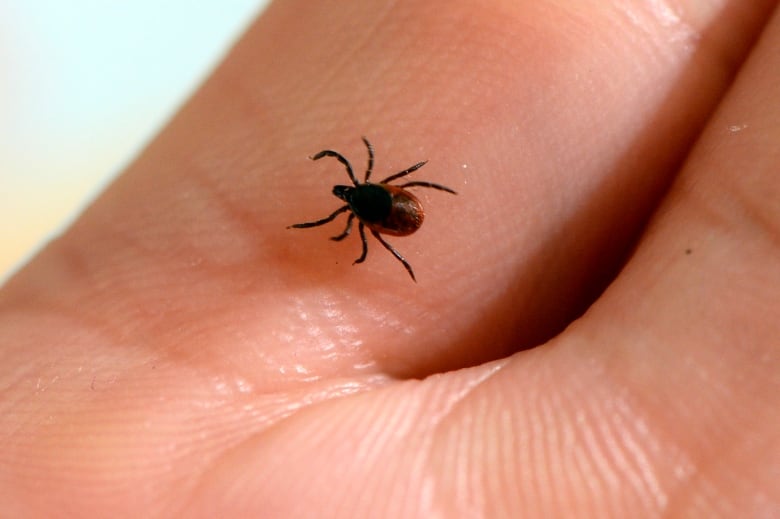Shannon Innis, from Sudbury, has been dealing with Lyme disease for years, and it took almost 18 years for it to be properly diagnosed.

With warmer days in the forecast, northern Ontario health units have been warning the public to check for ticks.
Public Health Sudbury and Districts has already tested a few that are tested positive for Lyme Disease, which can cause flu-like symptoms soon after being bitten.
If left untreated, more severe symptoms – like neurological and heart disorders – may occur, and can last from months to years.
Shannon Innis, from Sudbury, has been dealing with Lyme disease for years, and it took almost 18 years for it to be properly diagnosed.
When the symptoms first presented themselves – Innis said she experienced joint pain, headaches and “brain fog”– she attributed it to stress and exhaustion after completing her final year of university.
“There were a few low moments where the joint pain had just gotten so bad that even just moving hurt,” she said. “I just couldn’t think anymore, and I was starting to fall asleep standing up.”
“I was so tired but I wasn’t able to sleep anymore. My system was just so active. I couldn’t sleep at night. So I could just tell that if I didn’t get help, things were going to go in a very bad direction for me.”
After several visits to doctors that provided no relief, she began getting referrals to autoimmune specialists and neurologists.
“Having gone through all of those different specialists over the years and still coming up with nothing was very discouraging,” Innis said. “Especially because I was just not feeling well and I couldn’t really actively participate in life the way I wanted to.”
Innis began researching treatments on her own, an approach many with Lyme disease take. A clinic in Toronto diagnosed her with Fibromyalgia, which seemed like promising lead, but further research into the roots of Fibromyalgia led her to question whether or not she had Lyme disease.
Unfortunately for people with Lyme disease, the blood tests used to diagnose the disease aren’t always accurate, she said.
Her own blood test came back negative.
“That’s really the controversy surrounding Lyme disease is that the test doesn’t always detect it in patients who’ve had it for a long time, chronically.” Innis said.

“It’s missing a lot of patients. And unfortunately, people with Lyme disease are having to go to the United States or are having to get tested in the United States or Germany to find out if they are positive.”
“I think really that’s the push right now, to try to get some research into using a better test.”
In 2018, Innis’ doctor in Toronto sent her blood test to a lab in Germany, which confirmed that she had Lyme disease. Innis estimates she got the tick bite in 2000, which means she had been living with the disease for nearly two decades.
After the relief of getting the diagnosis, she began treatment, paying out of pocket for medications, antibiotics and herbal treatments, something she said was “unbelievable.”

Now, three years into the treatment, Innis said she’s about “70 per cent better” than she was before.
“Do I think I’ll ever get that last little bit? I don’t know,” she said. “But I’m hoping there’s still a lot of research going on with some different medications.”
“I’m hoping that I can keep trying the newest thing and hopefully get to the end of that and get fully cured, if that’s even really a thing.”
She’s also pushing to get the message about Lyme disease treatment out to the public.
“My frustration is that [Public Health Sudbury & Districts] post about Lyme- positive ticks,” she said. “But any time you ask, ‘OK, so what does a person do to get help and treatment when they get bitten?’ That’s really where you can’t get beyond. There’s nobody here that can help anyone.”
The treatment for Lyme disease, if the tick is found early enough, is a round of antibiotics, usually lasting 2 to 4 weeks.
“For some people, that has been successful, but for a lot of people, it’s just not enough,” she said. “And so there needs to be a change in terms of how Lyme disease is treated.”
